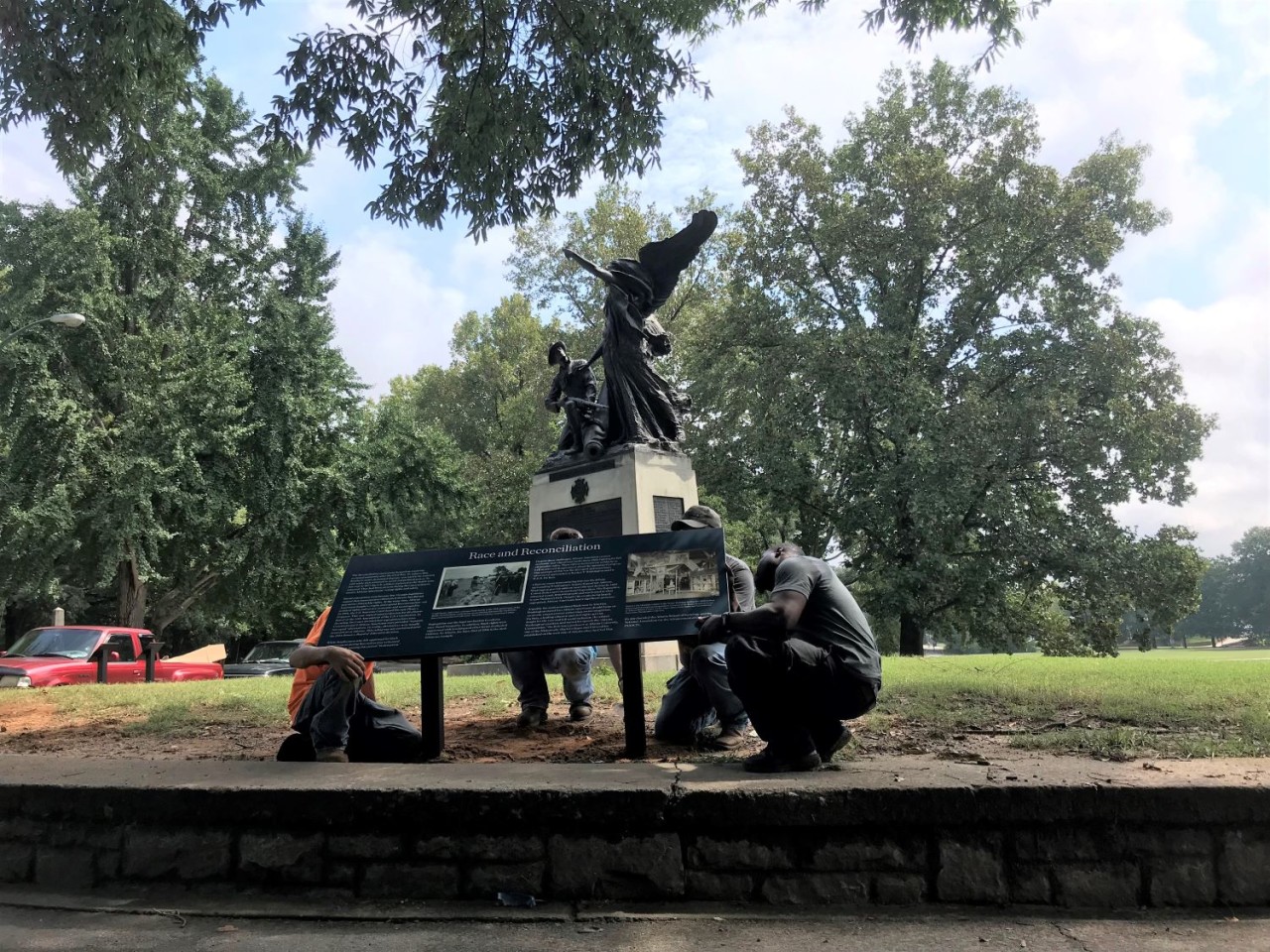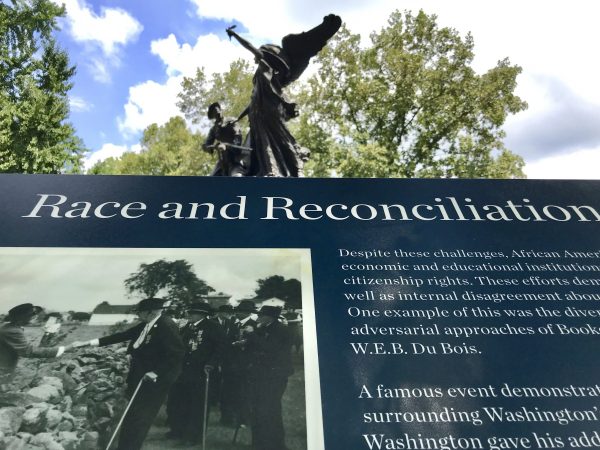Signs Meant to Provide Historical Context Installed Next To Atlanta Confederate Monuments

Workers from the Atlanta History Center install a new informational sign near the Peace Monument in Piedmont Park.
Emil Moffat / WABE
For the past 108 years, the Peace Monument has greeted visitors walking through the Piedmont Park gate at 14th Street.
The inscription below the statue tells the story of a group of Confederate veterans and their attempt to reconcile with the North after the Civil War.
But it offers no context as to the main reason the war was fought: slavery. Nor does it mentioned the discrimination African Americans faced during the Reconstruction period.

In an attempt to provide that context, workers from the Atlanta History Center on Friday morning installed two informational signs. They measure roughly 3 feet tall by 8 feet wide and feature photographs and stand on either side of the monument.
“They’re intended to turn the statue into an outdoor exhibition,” said Sheffield Hale, president and CEO of the Atlanta History Center. “Turn it from an object of veneration into an artifact. We hope that people will look at them and pay attention.”
The Atlanta History Center designed, printed, paid for and installed the signs. It worked with a city advisory committee formed in 2017 to study street names and monuments in Atlanta that are tied to the Confederacy.
Hale noted that the signs were intentionally designed not to look permanent. He said the signs should be able to change in the future to provide the fullest context of the moment.
Well we hope that this will be a model for other people to look at and not necessarily copy, but see how easy it is to do.”
Sheffield Hale, president and CEO of the Atlanta History Center
The final paragraph on one of the signs reads, in part, “This monument … should be seen as an artifact representing a shared history in which millions of Americans were denied civil and human rights.”
Rob Wiedenhoft, visiting from New York, was the first person to stop by and read the signs Friday morning.
“Well, I mean every monument is built in its time and its place for its reasons and that’s forgotten over time,” he said. “And reinterpreting without just being purely revisionist is important.”
Work crews also installed a similar sign Friday near a monument at Peachtree Battle Avenue. Informational signs are also planned for two monuments in Oakland Cemetery: the Confederate obelisk and the Lion of Atlanta.
Georgia, like six other Southern states, has a state law prohibiting the removal of any Confederate monuments.








